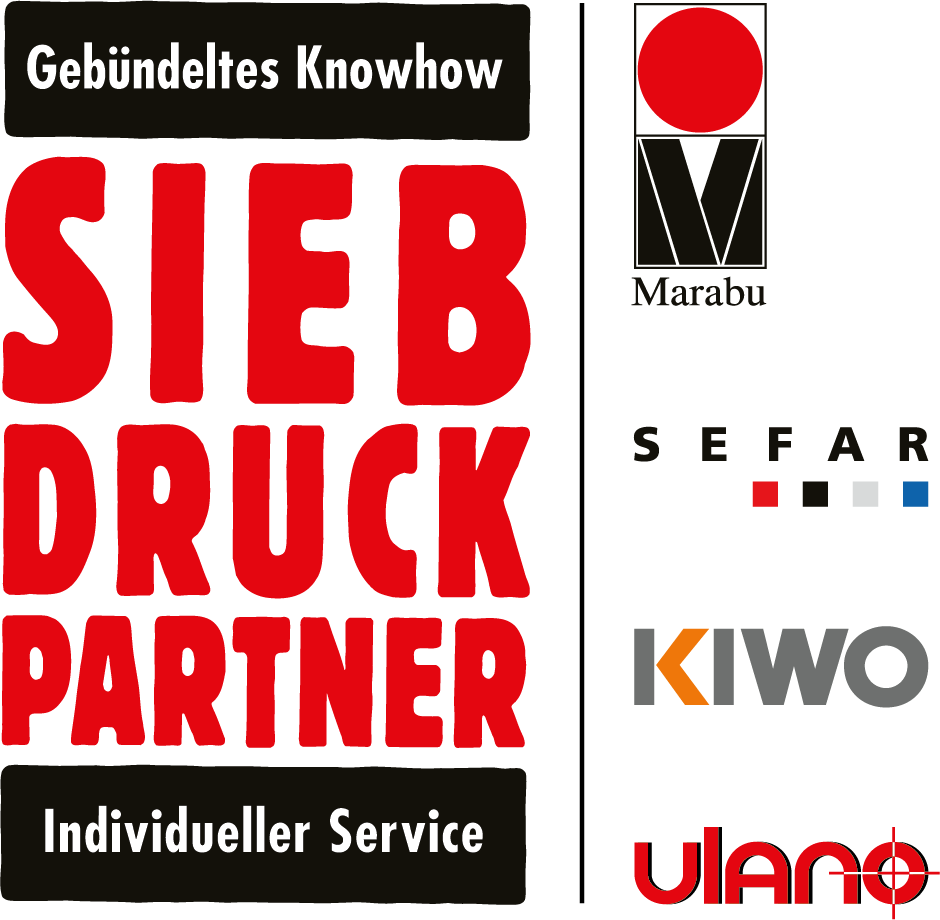Pad Printing - FAQ
ALWAYS A RECURRING TOPIC:
TROUBLESHOOTING IN PAD PRINTING
Even though pad printing is the most difficult of all printing processes to troubleshoot, as the multitude of factors can cause more than one error, we've provided a downloadable list of keywords. If this helps you remember a single source of error that you simply forgot to consider, we're happy to be of assistance.
Of course, our pad printing consultant, Mr. Manfred Lumpp, is also available to assist you.
Phone: 0163 / 8979803
E-mail:lumpp@schlee.cc
Pad does not absorb color in places
| Ink |
too thick |
Dilute |
|
dried up |
Clean plate with thinner |
|
wrong thinner |
choose a slower/appropriate thinner |
| Plate |
too flat |
use deeper plate |
|
wrong grid |
use a different grid |
|
mechanical damage |
new plate |
| Pad |
too flat |
use a steeper pad |
|
Surface roughened |
new pad |
|
Silicone swollen |
Blow air onto pad, better: new pad |
|
Surface oily |
Clean pad with solvent |
| Miscellaneous |
Contact pressure of pad on plate too high |
Reduce pad lift |
Pad releases color poorly
| Ink |
Ink dried on the pad |
use slower thinner |
|
Ink on the pad too wet |
use faster thinner |
| Plate |
too flat |
use deeper plate |
|
too deep |
use flatter plate |
|
wrong grid |
use a different grid |
| Pad |
wrong shape |
use a steeper pad |
|
Surface rough/worn |
new pad |
| Printing material |
Surface contaminated |
Pre-clean/degrease parts |
| Miscellaneous |
Cycle rate too slow |
increase |
|
Room temperature too high |
Optimal temperature: 18-20 ° C |
Coverage is insufficient
| Ink |
too thin |
Reduce thinner content |
|
translucent color |
Mix the ink to opaque |
| Plate |
too flat |
use deeper plate |
|
Areas not rasterized |
Rasterize areas |
|
wrong grid |
test different grid width |
| Pad |
too flat |
use a steeper pad |
|
Surface porous |
use a new pad |
|
too soft |
use a harder pad |
| Printing material |
dark background |
Use double printing or high-opacity ink |
|
Surface too structured |
Use a steeper and harder pad |
| Miscellaneous |
Blade sags |
Rasterize plate |
Register fluctuations
| Plate |
Position of individual print images incorrect |
new plate with corrected status |
| Pad |
not mounted centrally |
reposition |
|
different forms |
Use a uniform pad shape |
|
different hardnesses |
Use uniform pad hardness |
|
pad stroke not identical for all colors |
Adjust pressure |
| Printing material |
Material is not warp-free |
use other material |
| Miscellaneous |
Recordings are not perfect |
Workpiece must not have any play |
|
Rotary indexing table or similar runs inaccurately |
Check indexing |
|
Recordings were not mounted correctly |
Check screws and pins |
Distortion in the print image
| Plate |
Motive does not match the plate |
Check plate with film, if the film has slipped |
| Pad |
too small |
use a larger pad |
|
too hard/soft |
test other hardness |
|
Contact pressure too strong |
Reduce pad lift |
|
different contact pressure |
adjust all tampons equally |
|
wrong attachment point |
position differently |
| Printing material |
Material too soft/elastic |
Fix the part well, inflate the hollow body |
|
deep sink marks |
Use pad assembly or special pad |
|
Edges in the printing area |
pad replacement or monthly/special pad |
| Miscellaneous |
Recording unsuitable |
adapt to workpiece |
|
Recording not stable |
Holder made of more stable material |
|
Workpiece mounted at the wrong angle |
Change angle |
Blurry print
| Ink |
too thick |
Dilute |
|
too thin |
Mix with less thinner |
|
too slow |
use faster thinner |
| Plate |
underexposed during exposure |
Expose layer by layer |
|
too deep |
use flatter plate |
| Pad |
too soft |
use a harder pad |
|
wrong shape |
other Form tests |
| Printing material |
Surface contaminated |
Pre-cleaning |
|
severely deformed part |
pad assembly/use special pad |
|
heavily structured surface |
insert hard, steep pad |
| Miscellaneous |
Recording not stable |
Holder made of more stable material |
|
high cycle rate with large tampon volume |
Reduce cycle rate, waiting time before ink dispensing |
No clean color gradient, wetting disturbance
| Ink |
too thick |
Dilute |
|
too thin |
Mix with less thinner |
|
not mixed homogeneously |
Mix homogeneously, allow to outgas |
| Plate |
incorrect etching depth |
check, if necessary new plate |
|
wrong grid |
use a different grid |
| Pad |
Surface worn |
use a new pad |
|
wrong shape |
other Form tests |
|
Surface oily |
Clean/activate pad |
| Printing material |
Surface contaminated |
Pre-cleaning |
| Miscellaneous |
Paint contamination by grease, silicone... |
Reapply paint, clean materials |
Overprintability in multi-color printing
| Ink |
too thick |
Dilute |
|
too slow |
use faster thinner |
| Plate |
too deep |
make a flatter plate |
|
wrong grid |
use a different grid |
| Pad |
Surface worn |
use a new pad |
| Printing material |
very smooth closed structure |
problematic are substances whose surface cannot be dissolved |
Color does not match template
| Ink |
too thin |
mix again |
|
wrong recipe |
check, reshuffle |
|
too translucent |
mix with opaque base tones |
| Plate |
incorrect etching depth |
Check etching depth |
|
wrong grid |
use a different grid |
| Pad |
Surface worn |
use a new pad |
|
wrong shape |
Use a steeper, higher pad |
| Printing material |
dark printing material |
Double print or high opacity mixing |
|
changing background colors |
with white underlay, double print, high opacity mixing |
Paint splashes or threads
| Ink |
too thick |
Dilute |
|
Color builds up on the tampon |
use faster thinner |
| Plate |
too deep |
make a flatter plate |
|
wrong grid |
use a different grid |
| Pad |
Surface worn |
use a new pad |
|
wrong shape |
try a different padshape |
| Printing material |
Surface becomes statically charged |
Integrate ionization into the machine |
| Miscellaneous |
Humidity too low |
increase |
|
too high a clock rate |
Reduce printing speed |
|
Cycle rate uneven |
ensure constant pressure flow |
Fine lines converge
| Ink |
too thin |
mix again |
|
too slow |
use faster thinner, blow |
| Plate |
too deep |
make a flatter plate |
| Pad |
unsuitable |
Pad should be steep and hard |
| Miscellaneous |
Pad stroke set too low |
Reduce stroke to prevent squeezing of the paint |
Areas are not printed completely
| Ink |
too thin |
Remix ink with less thinner |
| Plate |
too flat |
make deeper plate |
|
wrong grid |
plate with different screening |
| Pad |
wrong shape |
other Form tests |
|
too soft |
test harder pad |
|
worn |
use a new pad |
| Printing material |
structured surface |
use a hard, pointed pad |
|
Surface contaminated |
Pre-cleaning |
| Miscellaneous |
blade sags |
Check plate depth, rasterize if necessary |
Small air pockets visible
| Ink |
too thick |
Dilute |
| Plate |
Defects in the cliché |
make a new plate |
| Pad |
worn |
use a new pad |
|
wrong shape |
choose a steeper shape |
|
too soft |
choose a harder pad |
| Printing material |
static charge |
Ionize |
|
Dust or other dirt particles |
Pre-cleaning, air shower or flame treatment |
| Miscellaneous |
damaged film |
new film |
|
Dust during exposure |
Clean the foil in the exposure unit and film, if necessary, new plate |
|
Environment not clean, dust |
Clean pad, possibly use integrated pad cleaning |
Insufficient color adhesion
| Ink |
unsuitable color system |
Choose the appropriate ink for the substrate |
|
Note drying times |
Adhesion tests only after the recommended time |
|
Observe mixing ratios |
For 2K systems, adhere exactly to the quantities specified |
| Pad |
Surface oily |
Clean/activate the pad with solvent before printing |
| Printing material |
Surface contaminated |
Pre-cleaning |
| Miscellaneous |
Surface poorly pretreated |
Check/adjust pretreatment |
|
wrong or no hardener |
Observe technical data sheets and quantity information |
|
Surface poorly treated |
Check/adjust follow-up treatment |
Color gloss not sufficient
| Ink |
Ink transfer too low |
deeper plate, double print |
|
unsuitable color system |
Choose a brilliant system, use brilliant tones for mixing |
| Plate |
too flat |
make deeper plate |
|
wrong grid |
Make plate with appropriate screening |
| Pad |
worn |
use a new pad |
|
wrong shape |
choose a steeper shape |
| Printing material |
Material structure unsuitable |
Color and texture influence the degree of gloss |
|
Material unsuitable |
choose a compatible color system |
© 2023 Marabu/Schlee. We expressly point out that this working document is not intended for arbitrary use on other websites, other media, or for any other distribution.



